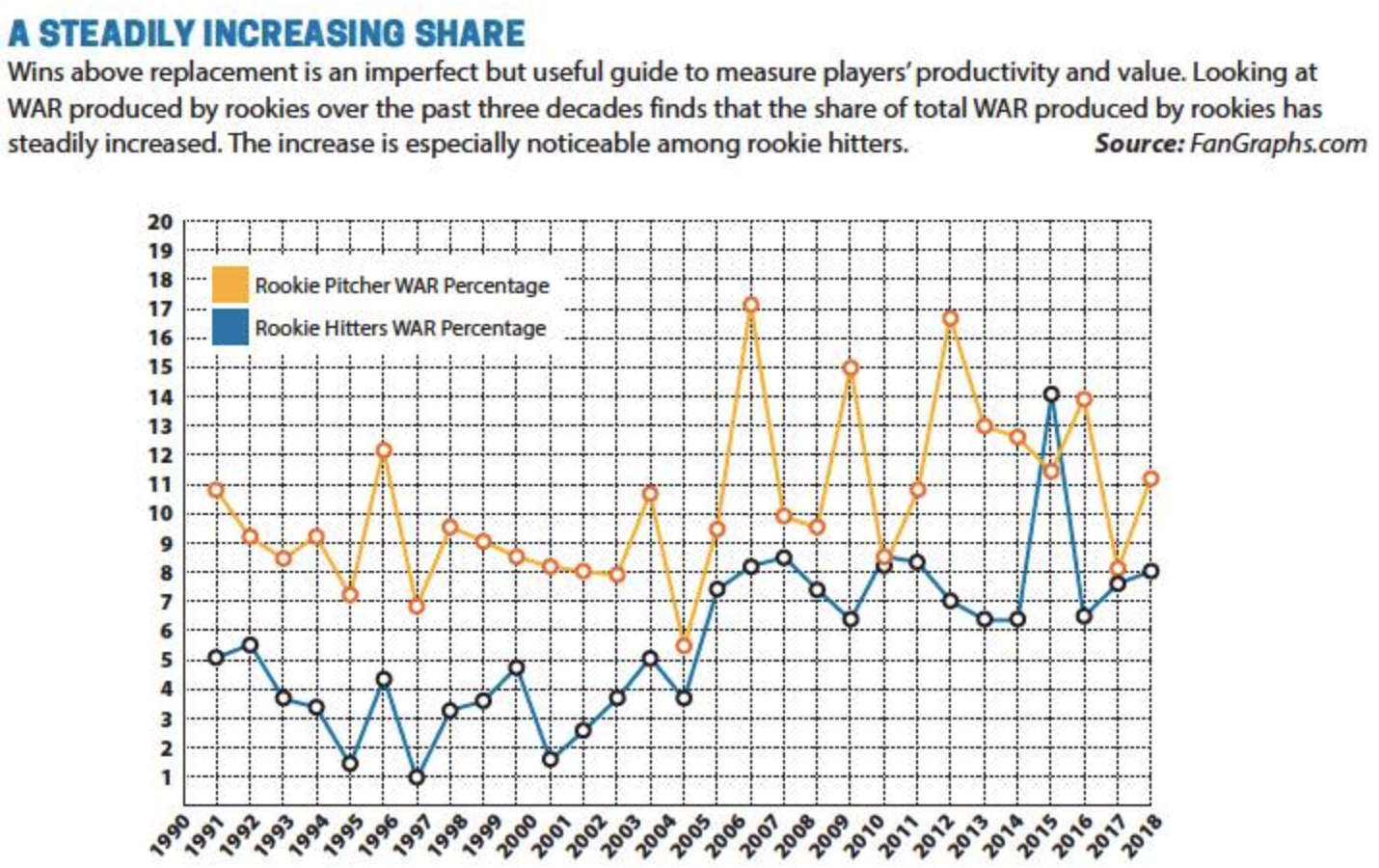Baseball Is In The Midst Of A Rookie Revolution


Image credit: Ronald Acuna Jr. (left) and Ozzie Albies (Photo by Tom DiPace)
You’re one click away from the 30th edition of our Top 100 Prospects, and we’re not bragging when we say we believe it’s one of the best Top 100s ever.
We’re not saying that because we’ve figured out some new secret algorithms we haven’t used in the past. And we haven’t pumped any pro scouting directors full of truth serum to get an even better sense of how the industry views each and every prospect.
We’re saying it because the industry as a whole does a better job of evaluating and developing prospects, and because the top of this list has a number of impact bats near the big leagues with few glaring flaws.
But we’re also saying it because we’re getting used to seeing baseball produce one great rookie class after another.
Last year, Ronald Acuña Jr., Shohei Ohtani and Juan Soto ranked among the best players in the majors as rookies. Heading into the season they ranked Nos. 1, 2 and 56 on the Top 100 Prospects. In 2017, Aaron Judge and Cody Bellinger went from the Top 100 to major league stardom. Other Rookies of the Year this decade, such as Corey Seager, Kris Bryant, Mike Trout, Bryce Harper and Carlos Correa, rapidly joined the ranks of the game’s elite upon graduating from prospectdom.

There are still busts. And there will be continue to be excellent major league players who fail to crack our Top 100. But overall, we are now in an era when prospects more often live up to lofty expectations.
When asked if teams do a better job evaluating and developing prospects now than a decade ago, one long-time pro scouting director had few doubts.
“Definitely,” the scout said. “We’re smarter about prospects. We blend scouting and performance better.”
Teams know a lot more than they used to. Teams now have granular data on most every pitch and batted ball in the minor leagues. Training tools continue to advance, which allows teams to help players diagnose and address weaknesses much quicker than was possible a generation ago. Teams also have spent more resources on scouting and coaching than they used to, which has paid off.
The game has steadily gotten younger, in part because rookies contribute immediately.
Just a decade ago, there were numerous years in which the Rookies of the Year were reminders that someone has to win the award every year, whether there’s a new star or not. Bobby Crosby, Angel Berroa, Chris Coghlan, Andrew Bailey, Geovany Soto and Jason Jennings all won ROY awards in the 2000s.
Now, we live in an age when every year seems to present us with a new star or three.
It’s not just that the best prospects are living up to expectations. Year after year, teams have figured out how to get more production out of rookies. According to the FanGraphs version of wins above replacement, the share of WAR being produced by rookies has grown dramatically in the past two decades.
In the 1990s, rookies produced 6 percent of the total WAR produced in the big leagues. In the 2000s, that jumped to 7.5 percent. In the 2010s, rookie WAR sits at 9.7 percent of the total. Rookie hitters produced more WAR in 2015—a robust class that included Bryant, Correa, Francisco Lindor, Miguel Sano, Michael Conforto and Kyle Schwarber, among others—than they did in the five seasons from 1992 to 1996 combined.

The big jump in rookie production began in 2005, which happens to be the same year drug testing began in the major leagues. The percentage of production (measured by WAR) in 2005 was almost double what it was in 2004. From 1990 to 2004, there was never a year when rookies produced more than 8 percent of the league’s total WAR. From 2005 to present, there’s only been one year where rookies have produced less than 8 percent.
Thanks to the rise of bigger bullpens, there are more innings thrown by rookie pitchers now than a generation ago, which plays a part in why rookies are producing a larger share of the league’s WAR. But when it comes to hitters, the numbers of plate appearances has stayed relatively static. What has changed is how much more productive those rookie hitters are when they arrive.
With Vladimir Guerrero Jr., Eloy Jimenez, Fernando Tatis Jr. and many others scheduled to arrive this year, don’t expect to see that trend change in 2019.
Baseball is counting more and more on rookies to step in and contribute.
And the rookies are living up to the challenge.

Comments are closed.